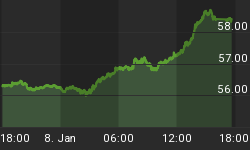Consumers Are Not Saving Yet
Over the last months, we have seen articles discussing the dramatic surge of Personal Saving Rate as % of Disposable Income and how America shifted from consumer-driven to saving-driven. Most observers forgot to mention Personal Saving Rate Ex Transfer Payments As % of Disposable Income actually kept declining since May 2008 and this can be seen on the chart below. This means such frugal lifestyle is not happening yet although it might occur in a not so distant future once consumers decrease their Financial Obligations Ratio, a measure of debt.

Retail Sales Y/Y Recovery Expected
Due to unchanged consumer spending habits combined with stabilization of both financial and housing markets, Retail Sales Y/Y are expected to reach 0% within the next five months according to Net % Willingness Consumer Loans Y/Y. This indicator has proven reliable over the last two decades judging by its correlation with the underlying. Although flat Retail Sales Y/Y does not imply any growth, it would definitely be an improvement from July's 2009 reading of -8.3% Y/Y. This most likely explains Bernanke's recent statement that economy is "less bad" than expected but still sluggish.

Economic Recovery Mostly Priced In
Improved Retail Sales Y/Y will directly impact GDP Real Y/Y in the next months. However, the S&P 500 TR Y/Y anticipates the GDP Real Y/Y by three months in general as seen below. This means the average market participant cannot foresee more than one quarter and benefits of higher Retail Sales Y/Y are mostly priced in at the current level. However, there might still be room for higher valuation due to S&P 500 TR momentum.

Deleveraging May Damper Earnings
Since the 90's recession, we noticed US Debt Domestic Nonfinancial Y/Y is leading S&P 500 Operating Earnings by nine months with an astounding correlation of 0.94. As you can see on the chart below, earning peaks and troughs were all foreseen with precision. However, there is a divergence between the S&P 500 Operating Earnings Forecast and the lead of debt for the next three quarters. S&P 500 Operating Earnings Forecast is created with a bottom-up approach by financial analysts working at Standard & Poor. US Debt Y/Y path is proven right, this would definitely create a double-dip recession in 2010. Please not the US Debt Domestic Nonfinancial Total is published on a quarterly basis and next release is September 17th for Q2 2009. Last data shown is Q1 2009.

Summary
Consumer spending will spur Retail Sales Y/Y which will by the same token boost Real GDP Y/Y. So far, the S&P 500 correctly predicted most of this action although there might still be room for higher valuation as not all Retail Sales Y/Y improvements are priced in at current levels considering market participants cannot foresee more than one quarter in advance. Furthermore, our rough times indicator suggests the US economy recession will most likely end in August 2009. Finally, debt may act as a brake and impair recovery in 2010 which may cause a double-dip recession.

Technical Levels
The S&P 500 is trading near 1030 points, its highest level since October 2008. March 2009 rally is still intact but lacking the ascending trading volume usually seen on recoveries which reminds us of the complacency state of US markets before the financial crisis. If markets keep rallying, the next resistances are located at 1100 and 1200 points. If US markets are going to retreat from current levels, Fibonacci retracements are as follow: 38.5% at 900 points, 50% at 850 points and 61.8% at 800 points.
















